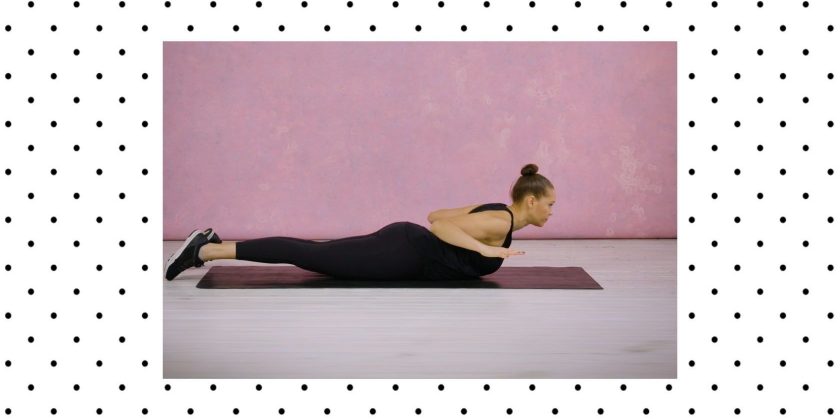Welcome to our weekly Move of the Week series. Every Monday, we’ll be sharing with you one of our favourite exercises – how to do them, what muscles they work and why they should be a regular part of your workout regime. This week: prone angel.
With many of us spending hours sitting down hunched over our laptops and phones every day, we may find ourselves experiencing tightness, or even pain, in our upper body, particularly our back and shoulders.
Working on your posture is so important and prone angel is the perfect dynamic pose to help improve your upper body mobility in the spine, back, shoulders and neck.
What is a prone angel?
A prone angel is an upper body mobility exercise that helps to increase the range of motion in the shoulders.
This exercise is great because:
It can be done at any time: it’s a perfect stretch to add to your morning routine, after work or incorporated into your workout.
It can help with tight shoulders: stretching out your upper-back can improve your posture and release any tension in the neck and shoulders.
It also targets the core: if you’re looking to improve your core stability, this is a great exercise to do.
What muscles does a prone angel work?
A prone angel primary targets the back including:
- Deltoids (shoulder muscles)
- Pectoral muscles
- Postural muscles
- Triceps
You may also like
Move of the week: add up and down pigeon stretch to your morning mobility routine
How to do a prone angel
- Start by lying face down with your forehead resting on the mat and your arms straight out in front of you, palms facing the ground.
- As you inhale, lift your arms, head and shoulders off the ground and bend your elbows at a 90-degree angle, squeezing them close to your ribcage. Make sure to keep your neck in a neutral position as you do so.
- As you exhale, bring the arms straight out in front of you again and lower your arms and head to the ground.
- Repeat ten times.
Images: Stylist
Source: Read Full Article
